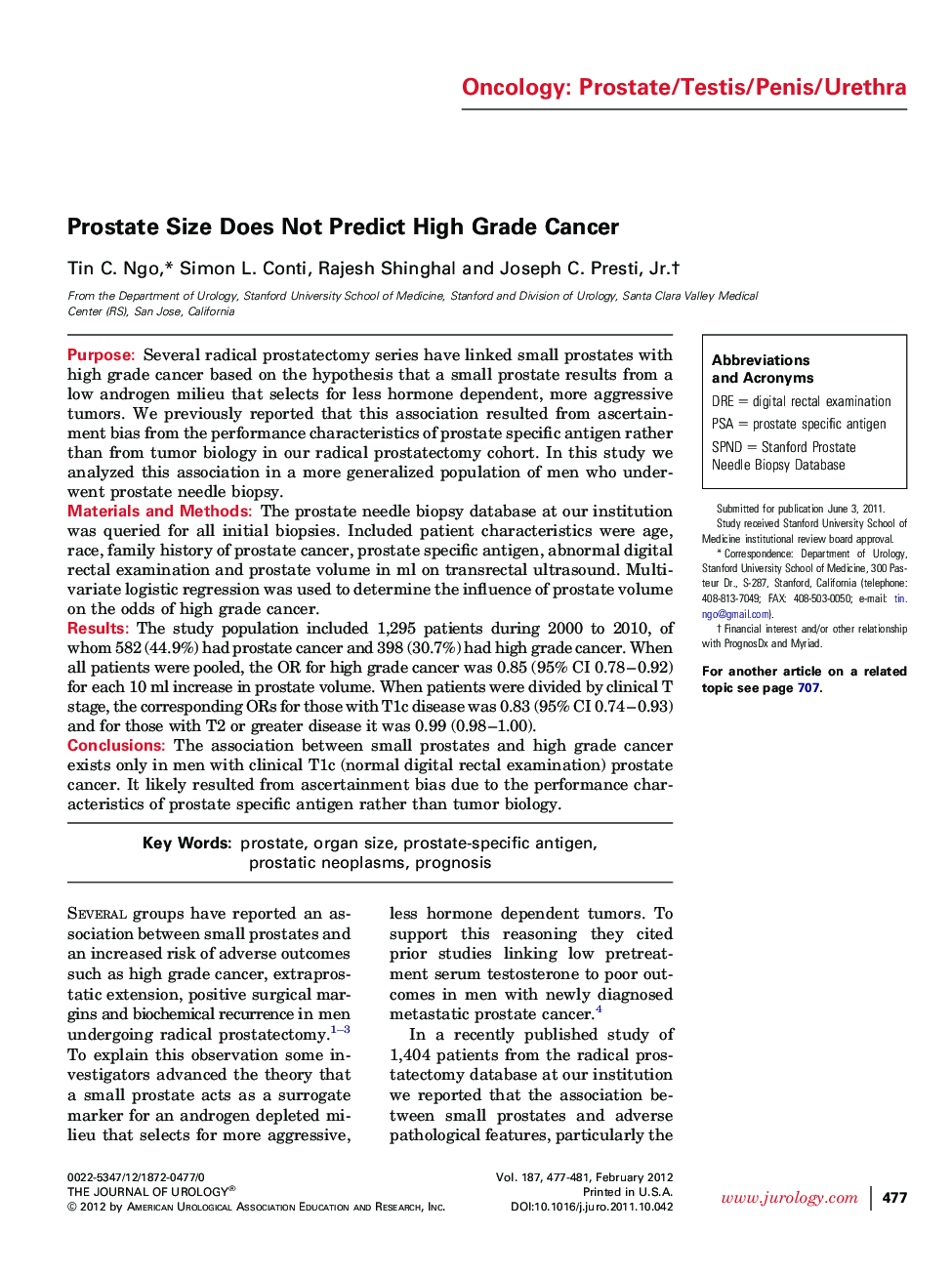| Article ID | Journal | Published Year | Pages | File Type |
|---|---|---|---|---|
| 3869605 | The Journal of Urology | 2012 | 5 Pages |
PurposeSeveral radical prostatectomy series have linked small prostates with high grade cancer based on the hypothesis that a small prostate results from a low androgen milieu that selects for less hormone dependent, more aggressive tumors. We previously reported that this association resulted from ascertainment bias from the performance characteristics of prostate specific antigen rather than from tumor biology in our radical prostatectomy cohort. In this study we analyzed this association in a more generalized population of men who underwent prostate needle biopsy.Materials and MethodsThe prostate needle biopsy database at our institution was queried for all initial biopsies. Included patient characteristics were age, race, family history of prostate cancer, prostate specific antigen, abnormal digital rectal examination and prostate volume in ml on transrectal ultrasound. Multivariate logistic regression was used to determine the influence of prostate volume on the odds of high grade cancer.ResultsThe study population included 1,295 patients during 2000 to 2010, of whom 582 (44.9%) had prostate cancer and 398 (30.7%) had high grade cancer. When all patients were pooled, the OR for high grade cancer was 0.85 (95% CI 0.78–0.92) for each 10 ml increase in prostate volume. When patients were divided by clinical T stage, the corresponding ORs for those with T1c disease was 0.83 (95% CI 0.74–0.93) and for those with T2 or greater disease it was 0.99 (0.98–1.00).ConclusionsThe association between small prostates and high grade cancer exists only in men with clinical T1c (normal digital rectal examination) prostate cancer. It likely resulted from ascertainment bias due to the performance characteristics of prostate specific antigen rather than tumor biology.
